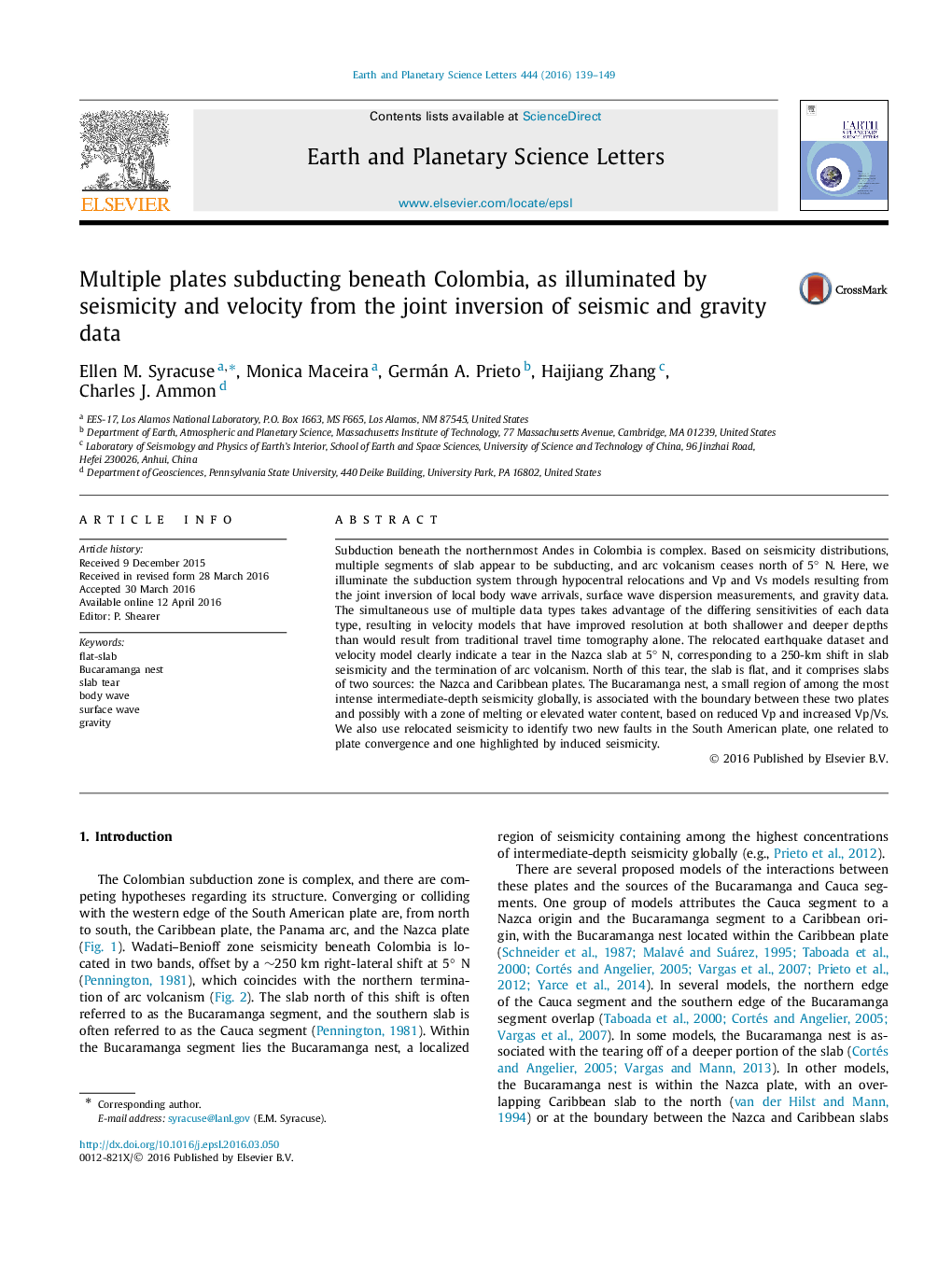| Article ID | Journal | Published Year | Pages | File Type |
|---|---|---|---|---|
| 6427495 | Earth and Planetary Science Letters | 2016 | 11 Pages |
â¢Joint inversion provides a clearer image of subduction than body-wave-only tomography.â¢Normal-dip subduction of Nazca beneath volcanogenic southern Colombia.â¢Non-volcanogenic flat-slab subduction of Nazca and Caribbean plates further north.â¢Slab tear between normally dipping and flat sections of Nazca plate.
Subduction beneath the northernmost Andes in Colombia is complex. Based on seismicity distributions, multiple segments of slab appear to be subducting, and arc volcanism ceases north of 5° N. Here, we illuminate the subduction system through hypocentral relocations and Vp and Vs models resulting from the joint inversion of local body wave arrivals, surface wave dispersion measurements, and gravity data. The simultaneous use of multiple data types takes advantage of the differing sensitivities of each data type, resulting in velocity models that have improved resolution at both shallower and deeper depths than would result from traditional travel time tomography alone. The relocated earthquake dataset and velocity model clearly indicate a tear in the Nazca slab at 5° N, corresponding to a 250-km shift in slab seismicity and the termination of arc volcanism. North of this tear, the slab is flat, and it comprises slabs of two sources: the Nazca and Caribbean plates. The Bucaramanga nest, a small region of among the most intense intermediate-depth seismicity globally, is associated with the boundary between these two plates and possibly with a zone of melting or elevated water content, based on reduced Vp and increased Vp/Vs. We also use relocated seismicity to identify two new faults in the South American plate, one related to plate convergence and one highlighted by induced seismicity.
